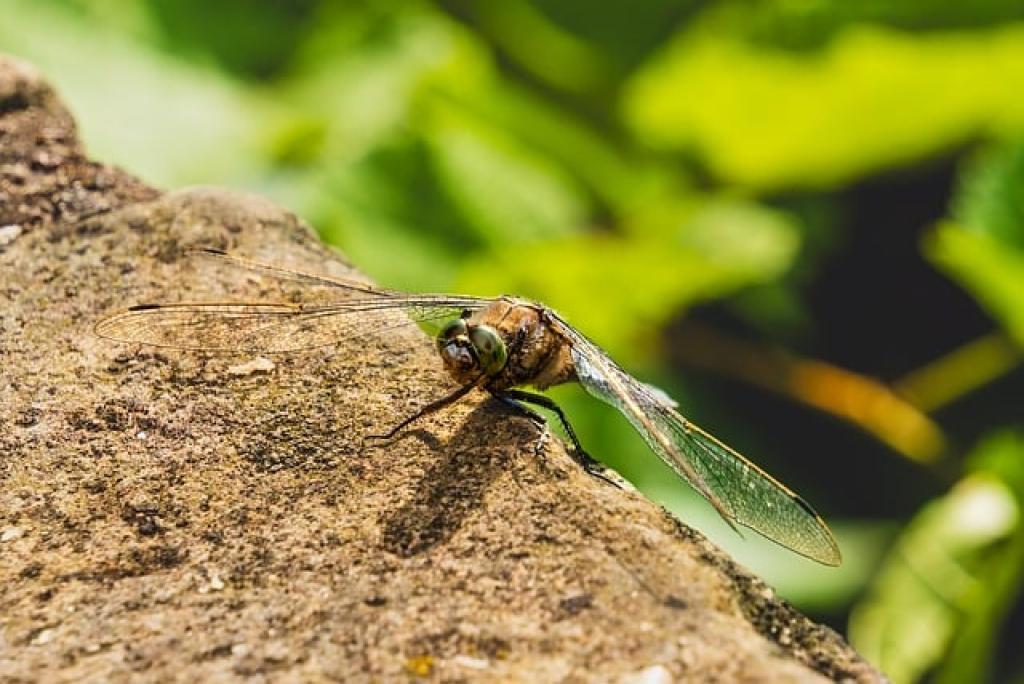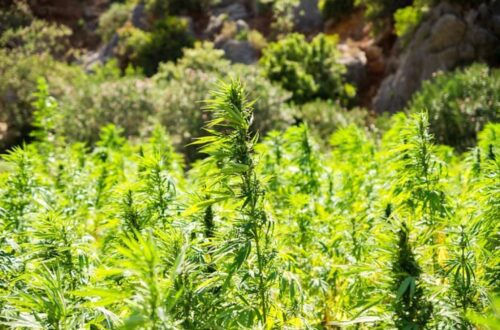Imagine a world where hemp plants not only provide resources for industries but also play a crucial role in restoring our fragile ecosystems. This sustainable wonder plant is not new to humanity, but its potential in wildlife habitat restoration is just beginning to unfold.
Hemp has an incredible ability to rejuvenate soil health, making it an ideal candidate for restoring lands that have been ravaged by deforestation, pollution, and agriculture. When planted, hemp’s deep roots can help prevent soil erosion, promote soil aeration, and enhance water retention.
Furthermore, hemp fields can offer a thriving habitat for various species of wildlife. Birds, insects, and small mammals can find food and shelter among the tall, sturdy hemp plants. This natural haven supports biodiversity, providing each creature with a place to flourish and contribute to the ecosystem.
In our quest to heal the planet, using hemp in wildlife habitat restoration presents a beacon of hope. Join the journey as we explore the fascinating intersection of hemp and environmental sustainability.
Why Hemp Can Benefit Wildlife Habitats
Hemp’s multifaceted nature makes it a superb ally for wildlife habitats. One of its standout qualities is its rapid growth, which means it can quickly establish itself and start repairing damaged landscapes. This swift growth provides immediate cover and resources for wildlife, creating an instant oasis in otherwise barren areas.
Additionally, hemp requires very few pesticides and herbicides, which is a massive plus for the surrounding fauna. Traditional crops often need heavy chemical inputs, which can harm wildlife and disrupt ecosystems. By choosing hemp, we reduce the toxic load on the environment, making habitats safer for all species.
Hemp plants also produce an abundance of seeds, which are a nutritious food source for various birds and small mammals. These seeds support the dietary needs of wildlife, promoting healthier, more resilient populations.
Further, the dense foliage of hemp provides excellent shelter, protecting animals from predators and harsh weather. This natural coverage can significantly boost the survival rates of many species, particularly in restored areas where shelter options are limited.
By promoting healthier ecosystems, hemp helps create a balance that benefits all forms of life. Its versatility and hardiness make it a powerful tool in the mission to restore and sustain wildlife habitats.

The Environmental Impact of Hemp Farming on Wildlife
Hemp farming boasts numerous environmental benefits that positively influence wildlife. One of the most impressive advantages is hemp’s ability to improve soil health. Healthy soil is the foundation for thriving ecosystems, as it supports plant life that animals depend on for food and shelter. Hemp’s deep roots help prevent soil erosion and facilitate nutrient cycling, which together promote a more vibrant habitat.
Reducing Pollution
Another major benefit comes from hemp’s minimal need for chemical fertilizers and pesticides. These chemicals often run off into nearby water bodies, contaminating drinking supplies and harming aquatic life. By reducing reliance on these substances, hemp farming helps maintain cleaner water sources and healthier aquatic ecosystems, benefiting both land and water-dwelling wildlife.
It’s also worth noting, hemp acts as a natural air purifier by absorbing CO2, a greenhouse gas that contributes to climate change. A reduction in atmospheric CO2 levels can mitigate the unpredictable weather patterns associated with climate change, which in turn ensures more stable living conditions for wildlife.
Additional Biodiversity Support
Hemp fields can support a diverse array of species, fostering greater biodiversity. These fields offer a harmonious environment where a variety of plants, insects, birds, and mammals can coexist. This increase in biodiversity creates a more resilient ecosystem, capable of withstanding environmental stressors and ensuring the survival of different species.
In a nutshell, hemp farming not only supports healthier habitats by rejuvenating the soil and reducing pollution but also plays a pivotal role in maintaining biodiversity. These collective benefits underline hemp’s significant positive environmental impact on wildlife.
How Hemp Can Aid in Ecosystem Restoration
Hemp is a superstar when it comes to ecosystem restoration. For starters, it’s known for its phytoremediation properties, which means it can absorb toxins, heavy metals, and other pollutants from the soil. When areas are contaminated, planting hemp can help detoxify the ground, paving the way for other plants to grow and for wildlife to return.
Hemp also promotes soil structure and health. Its deep root system helps break up compacted soil, making it easier for water and nutrients to reach other plant roots. This improved soil structure is vital for ecosystem recovery, as it supports diverse plant life, which in turn attracts a variety of insects and animals.
Additionally, hemp grows quickly and densely, which helps prevent soil erosion. In areas where soil has been degraded, planting hemp can quickly establish ground cover, protecting the area from wind and water erosion and stabilizing the ecosystem.
Finally, hemp can be an excellent crop to lease or donate for reforestation projects. Its rapid growth cycle means it doesn’t compete with slower-growing native plants, offering a temporary solution to land that needs immediate cover and protection while longer-term restoration efforts take root.
In essence, hemp’s remarkable ability to clean soil, improve structure, prevent erosion, and support biodiversity makes it an invaluable tool for restoring once-damaged ecosystems. This powerful little plant can breathe new life into areas that have seen better days, fostering an environment where nature can thrive again.
Challenges and Solutions for Utilizing Hemp in Wildlife Habitat Rehab
While hemp offers numerous benefits for ecosystem restoration, there are some challenges to be aware of when using it for wildlife habitat rehab. One of the main issues is the risk of hemp outcompeting native plant species. It’s crucial to carefully manage and monitor hemp planting to ensure it doesn’t overshadow plants that are indigenous to the area.
Additionally, there can be regulatory hurdles. Hemp cultivation is still heavily regulated in many regions, and navigating these laws can be complex. Working with local authorities and organizations that specialize in habitat restoration can help streamline the process and ensure compliance.
Integrating Hemp with Native Species
Another challenge is integrating hemp into existing ecosystems without disrupting wildlife. It’s essential to plant hemp in a way that complements the local flora and fauna. This often means creating a mix of hemp and native plants so that animals can still access the habitat they need for food and shelter.
Finding the right balance requires research and planning. Consulting with ecologists and conservation experts can provide valuable insights into the local ecosystem’s needs. This collaboration can help design a planting strategy that maximizes the benefits of hemp while respecting the natural habitat.
Finally, monitoring and maintenance are key. Regularly checking on the progress of hemp in the rehab area helps identify any issues early on. If hemp starts to dominate too much, it might be necessary to remove some plants or adjust the planting strategy.
The Bottom Line: Hemp As a Sustainable Solution for Wildlife Habitat Restoration
In summary, hemp has immense potential to revolutionize wildlife habitat restoration. Its rapid growth, minimal need for pesticides, and ability to enhance soil health make it an attractive option for ecological rehabilitation projects.
However, integrating hemp into habitat restoration isn’t without its challenges. From regulatory hurdles to the risk of it overpowering native species, it’s clear that careful planning and ongoing monitoring are crucial. By working closely with ecologists, farmers, and local authorities, these obstacles can be effectively managed.
Furthermore, a well-thought-out planting strategy that incorporates hemp along with native plants can provide a balanced habitat that supports a variety of wildlife. This collaborative approach ensures that the natural ecosystem remains intact while reaping the benefits of hemp cultivation.
Despite the challenges, the benefits are clear: hemp can improve soil health, reduce the need for harmful chemicals, and offer a sustainable source of raw materials. These advantages align perfectly with the goals of those dedicated to wildlife conservation and habitat restoration.
Ultimately, hemp represents a promising and sustainable tool for restoring and enhancing wildlife habitats. By embracing this versatile plant and addressing its challenges proactively, we can make significant strides in conserving our natural ecosystems for future generations. Let’s continue to explore and harness the power of hemp to create a more sustainable and biodiverse world.






